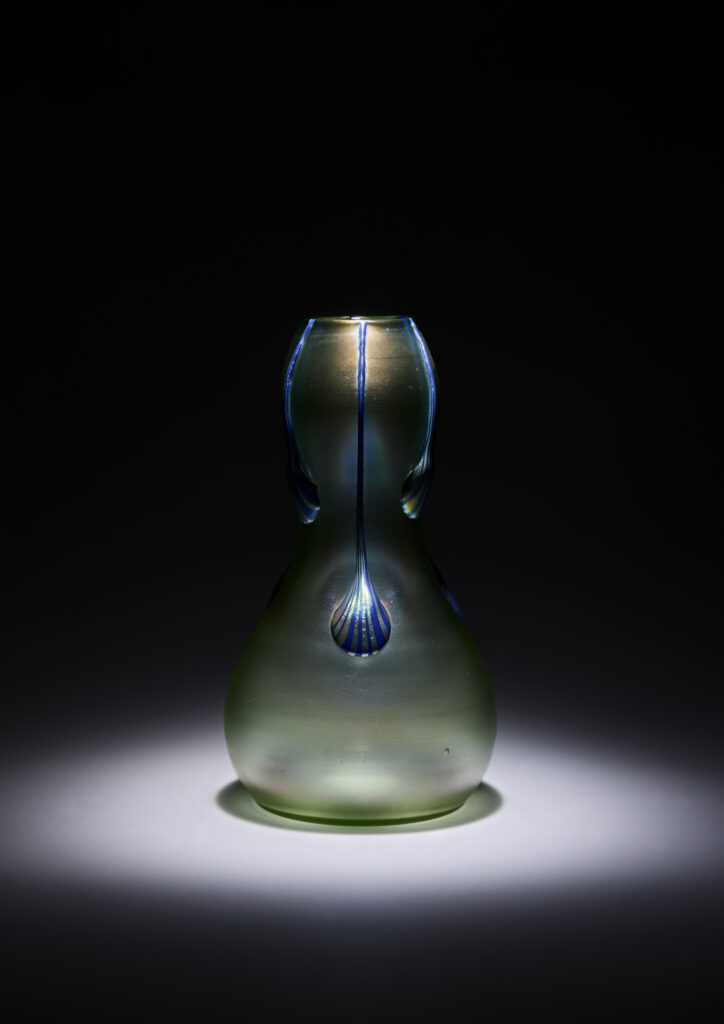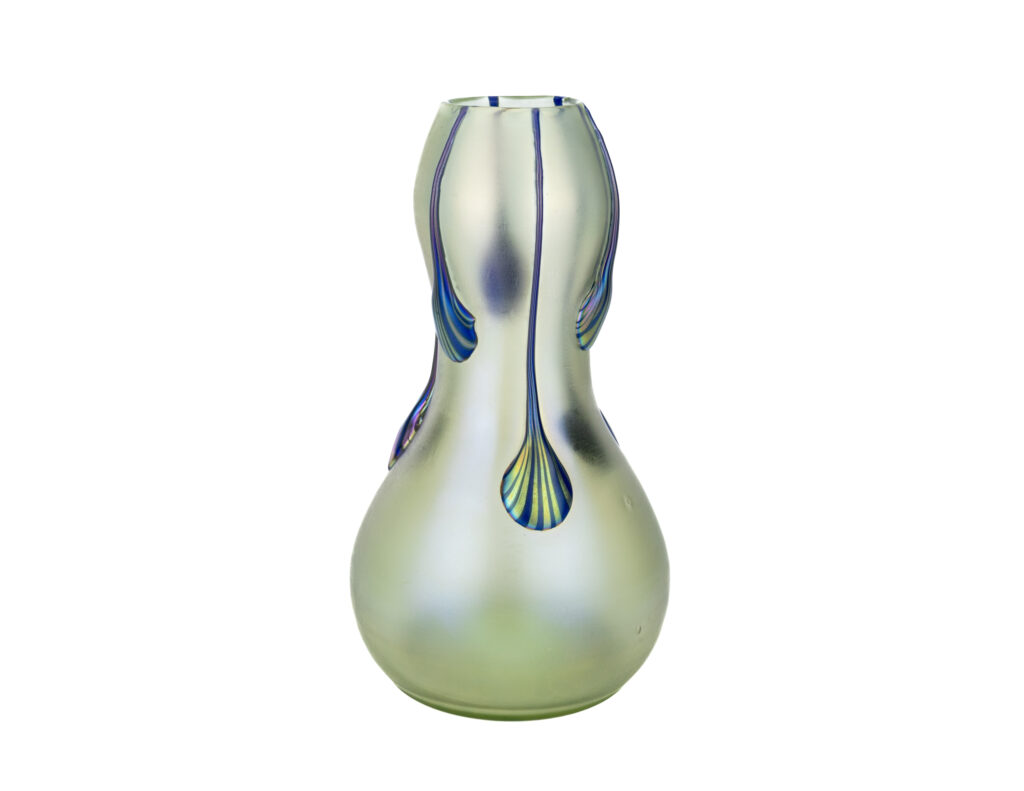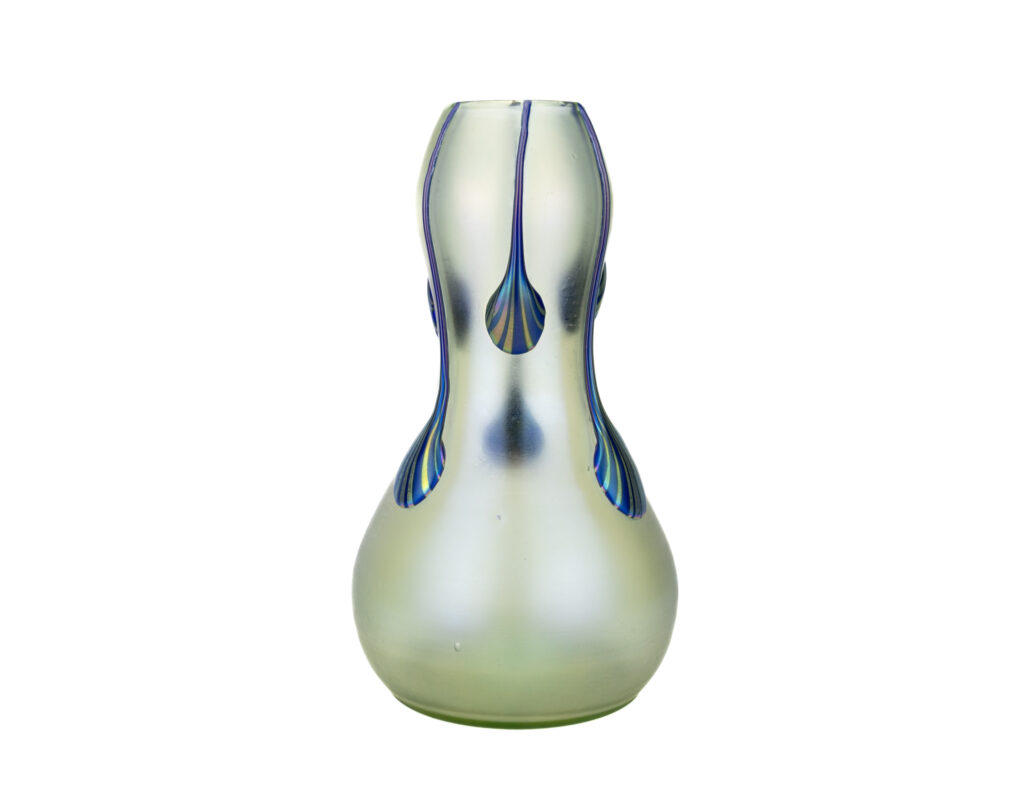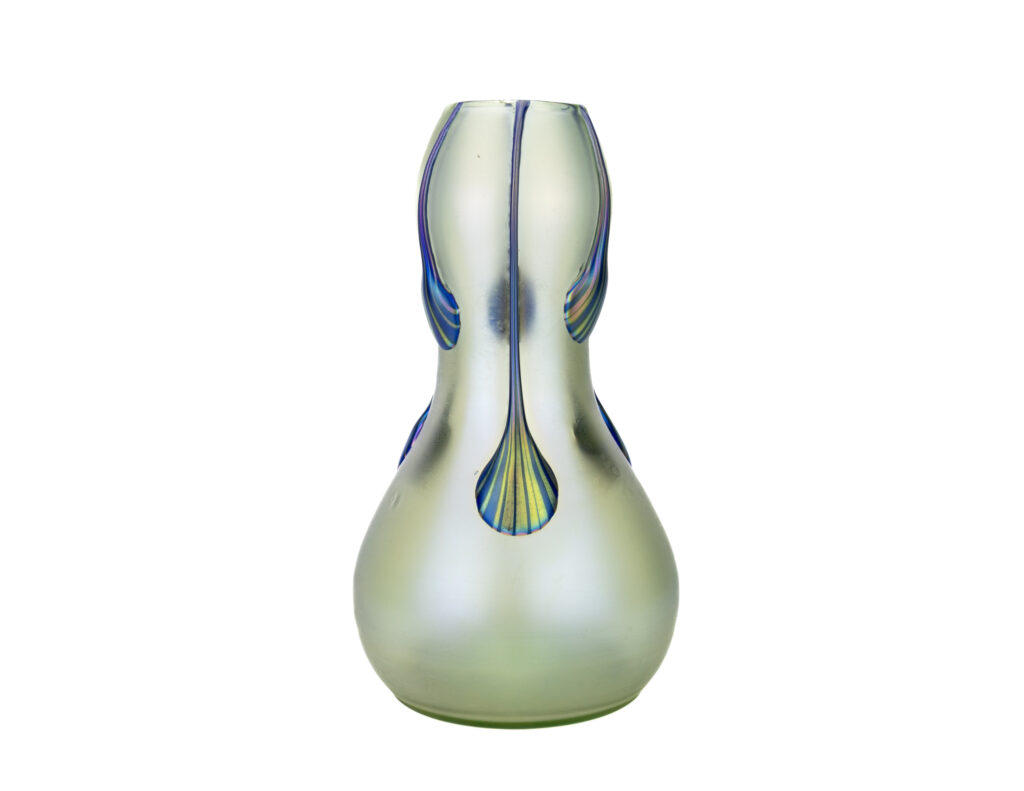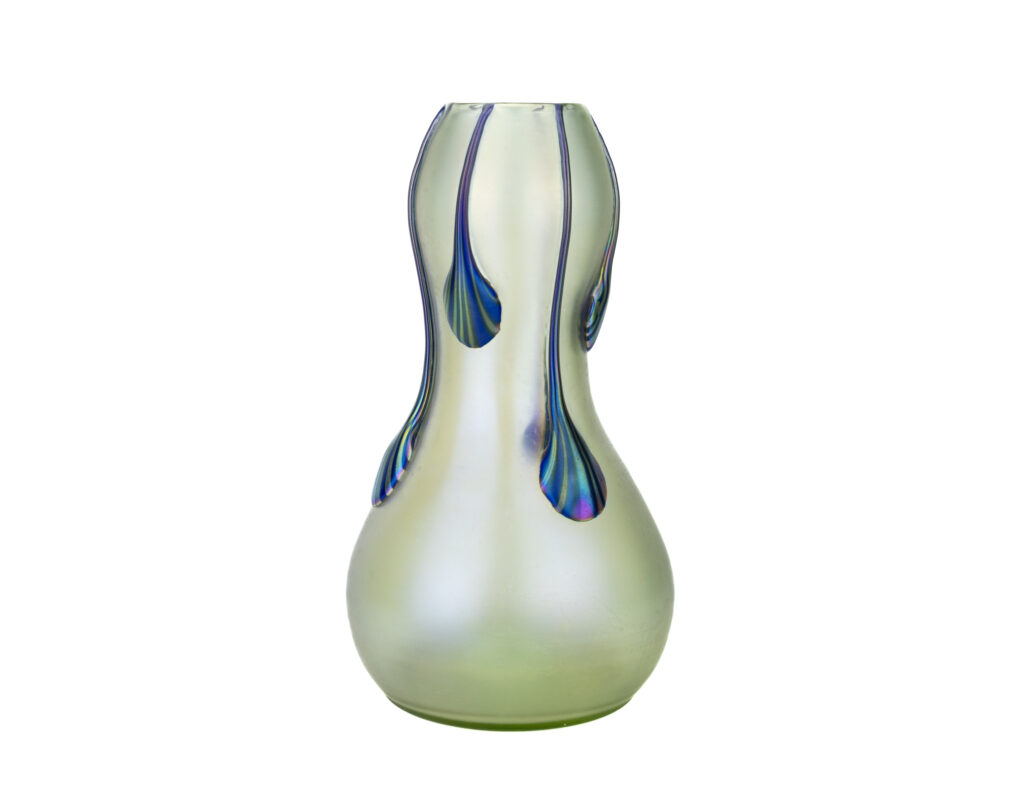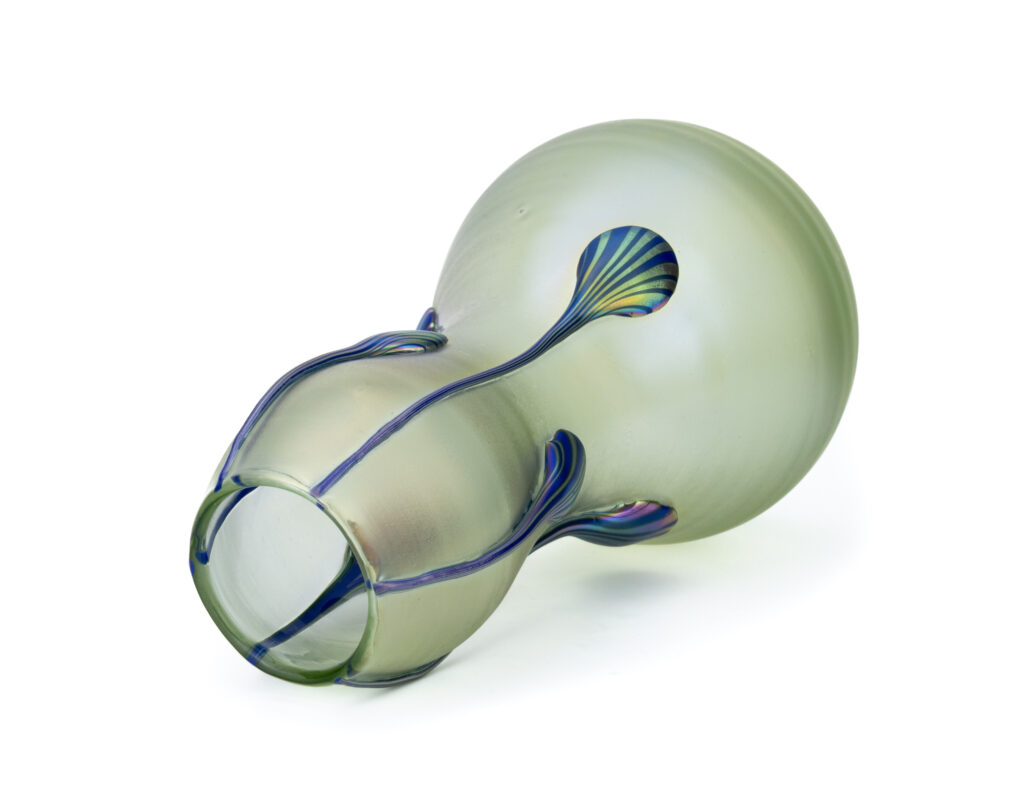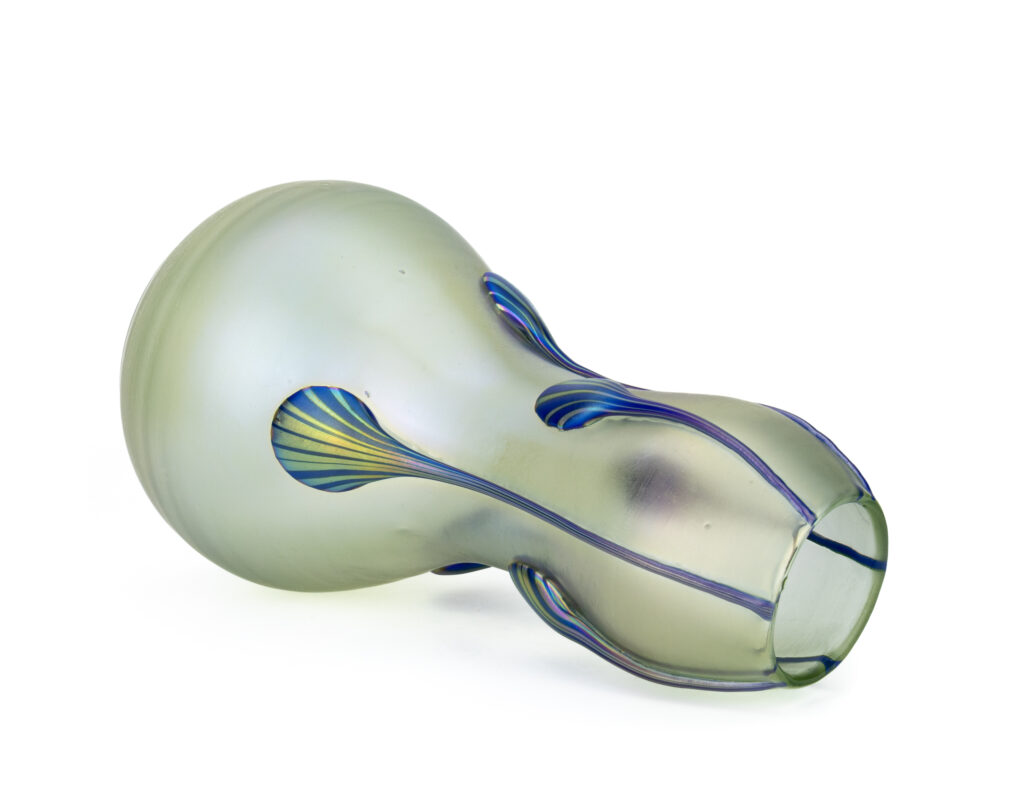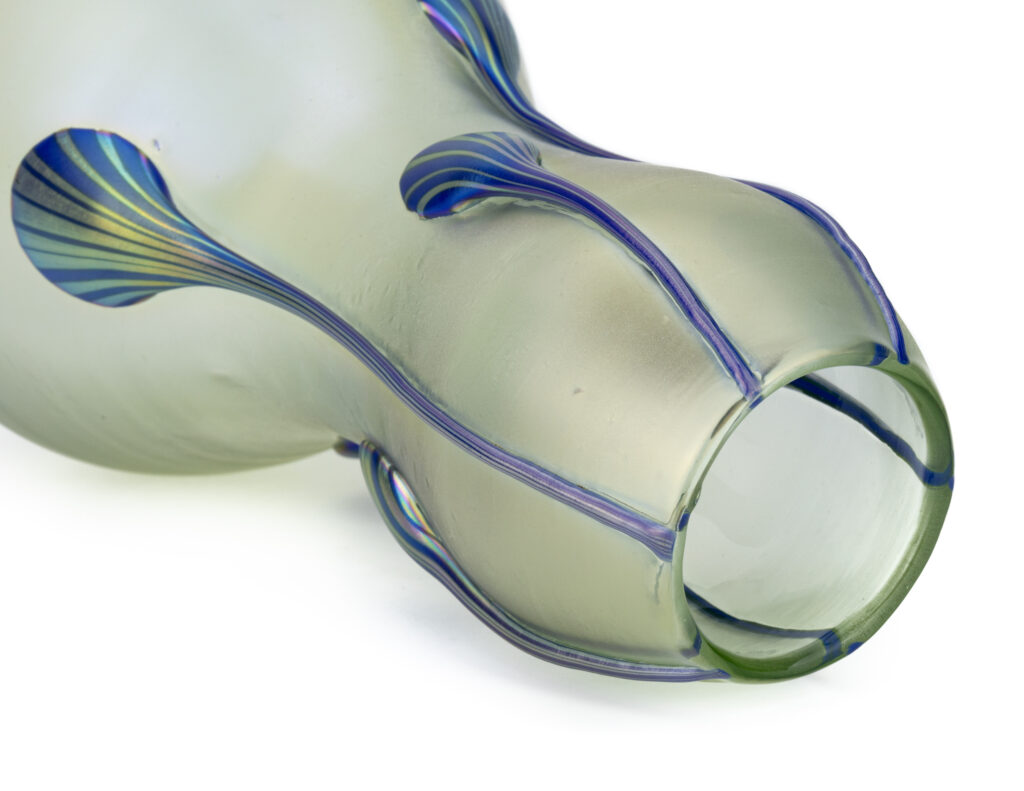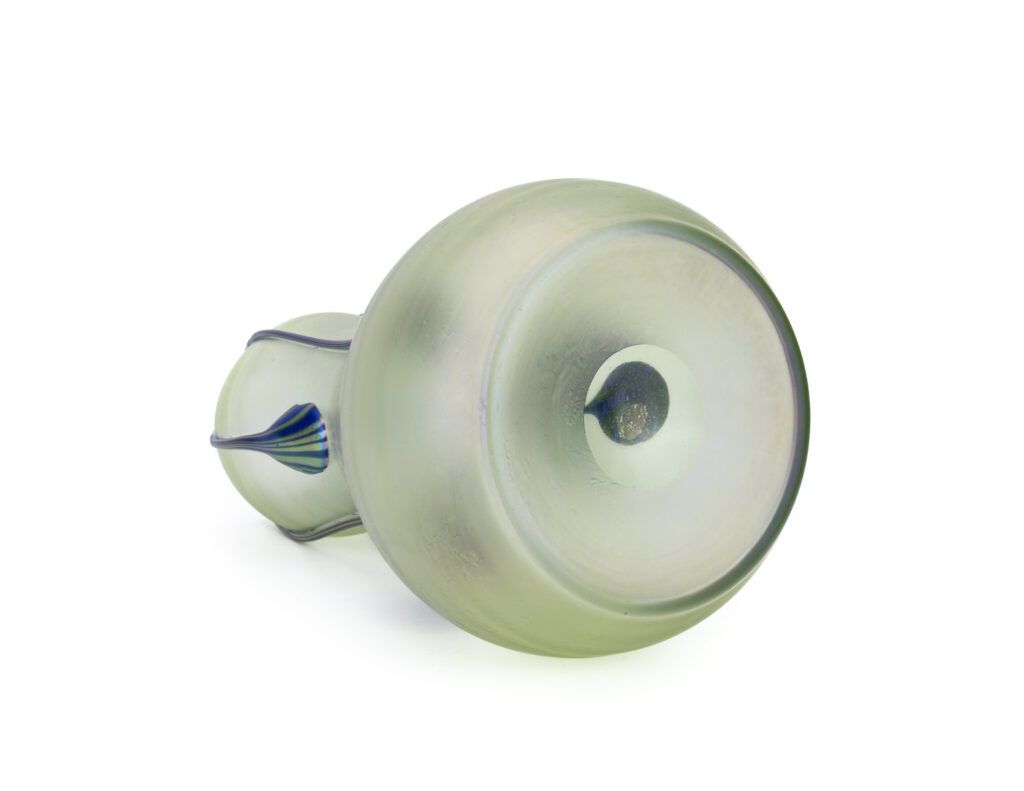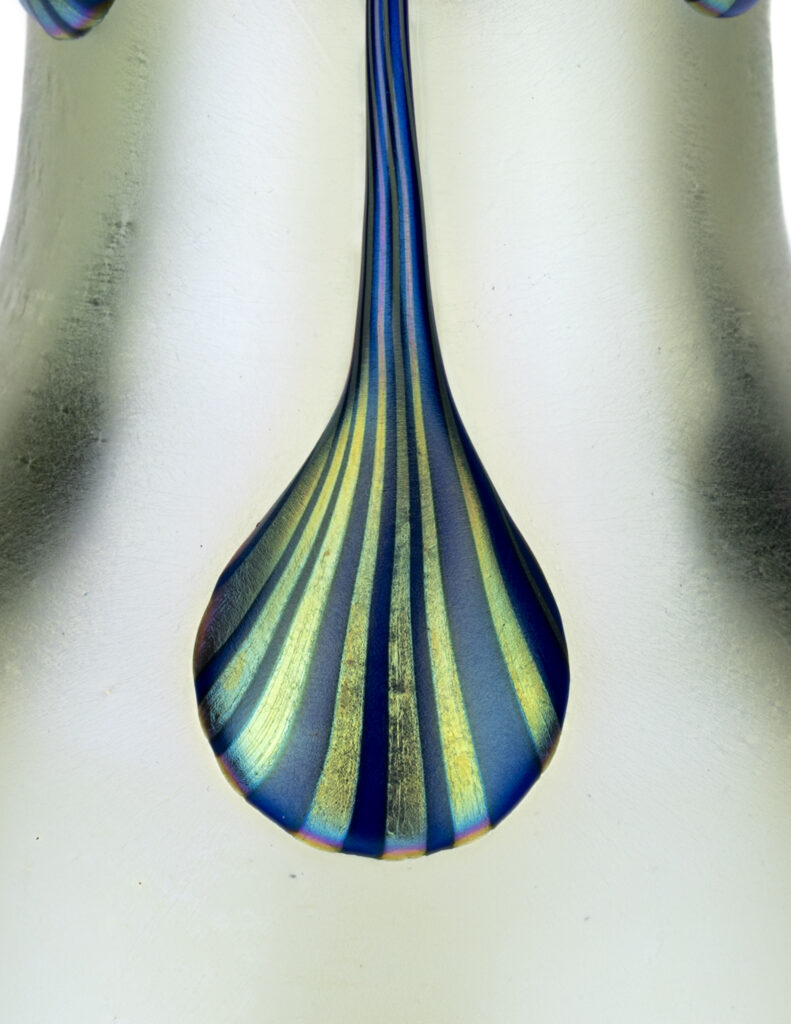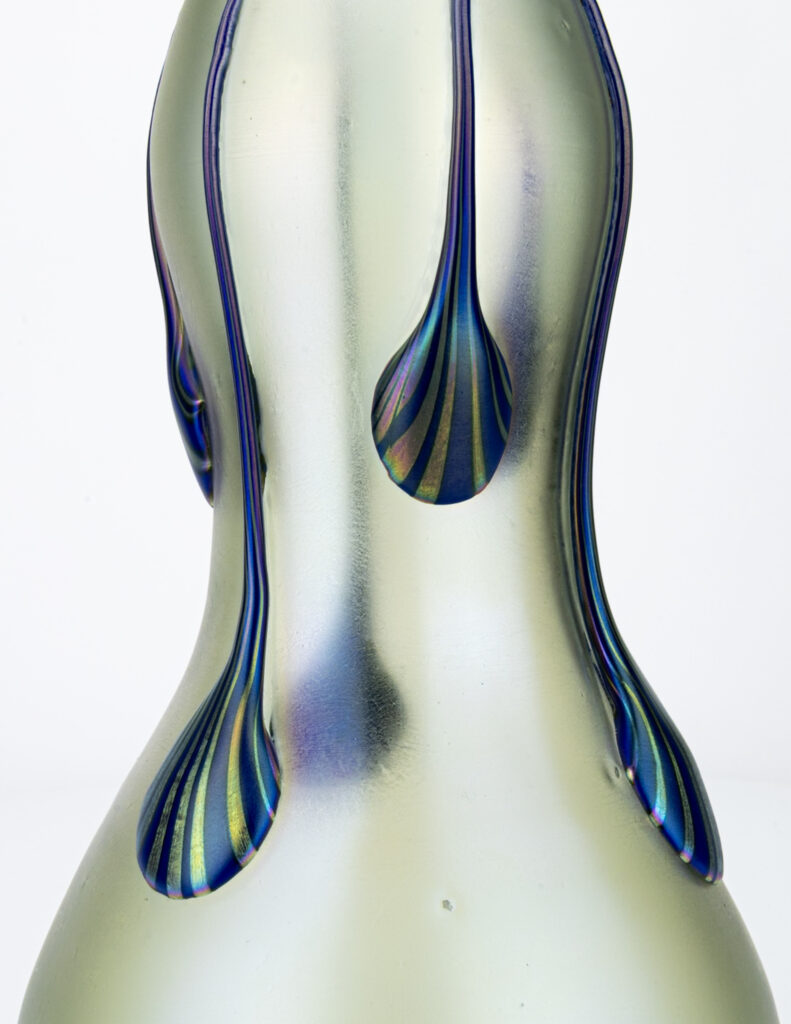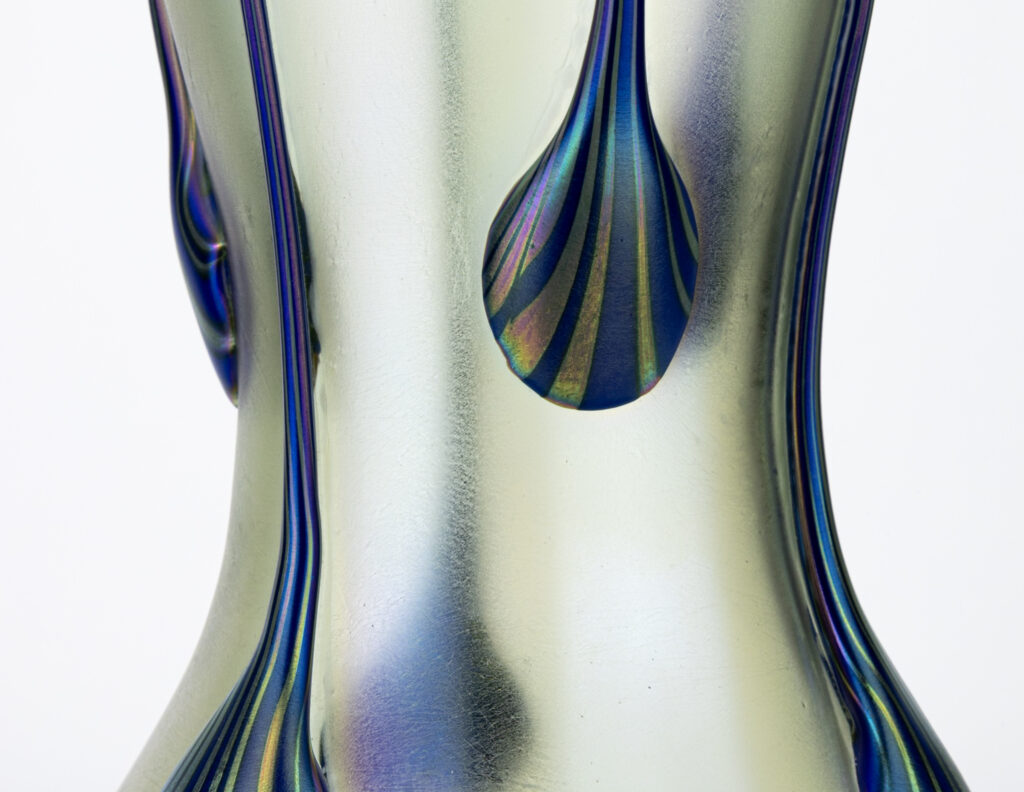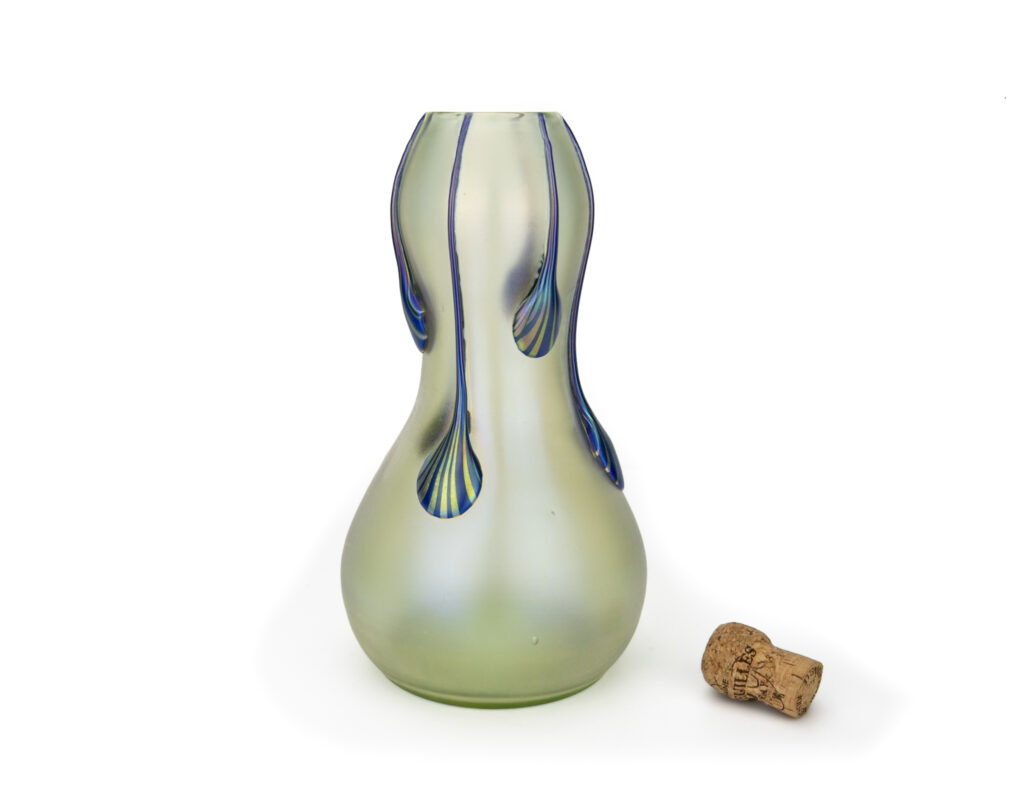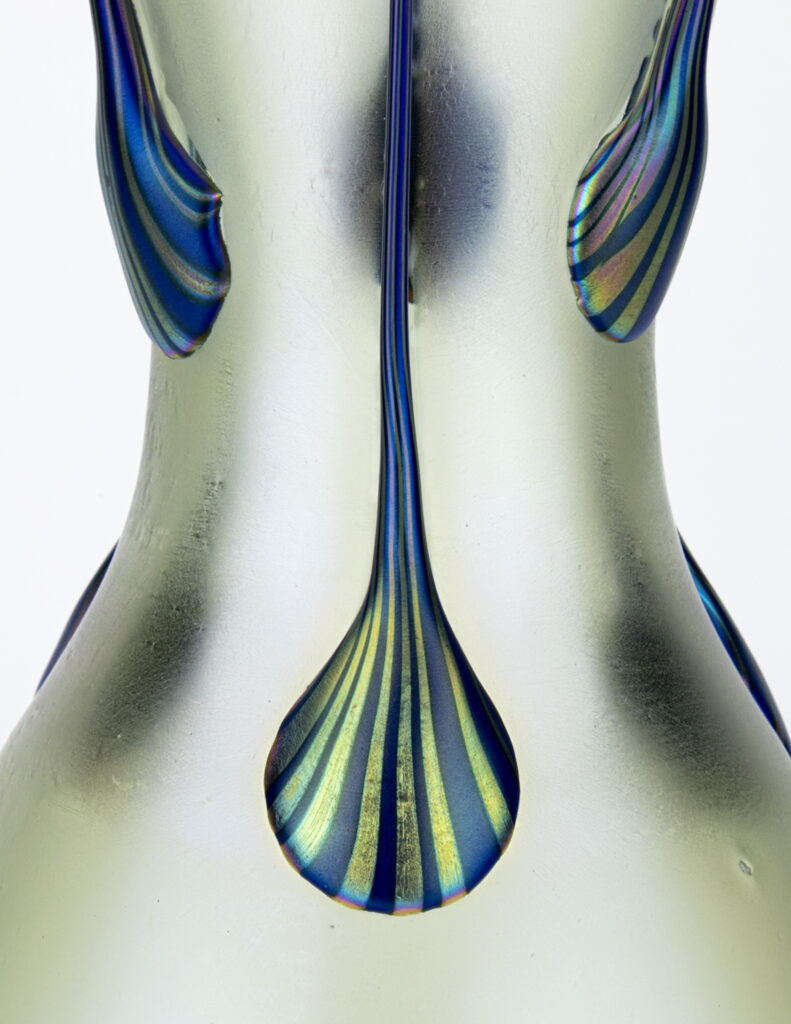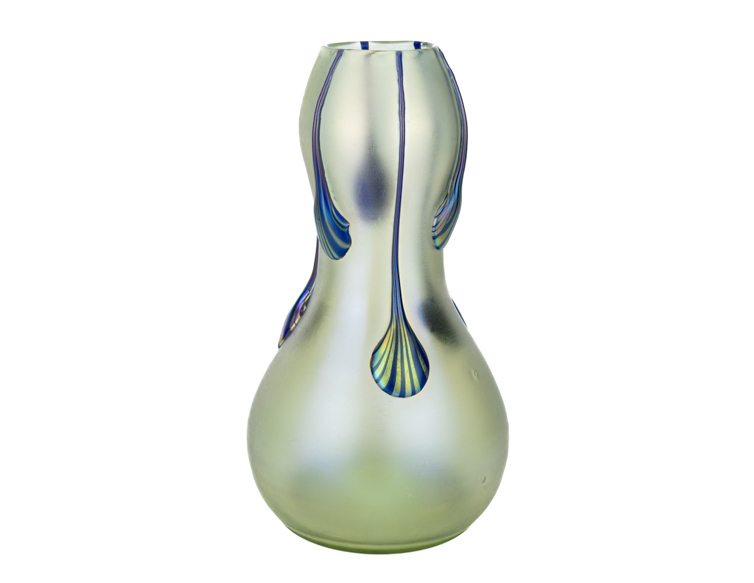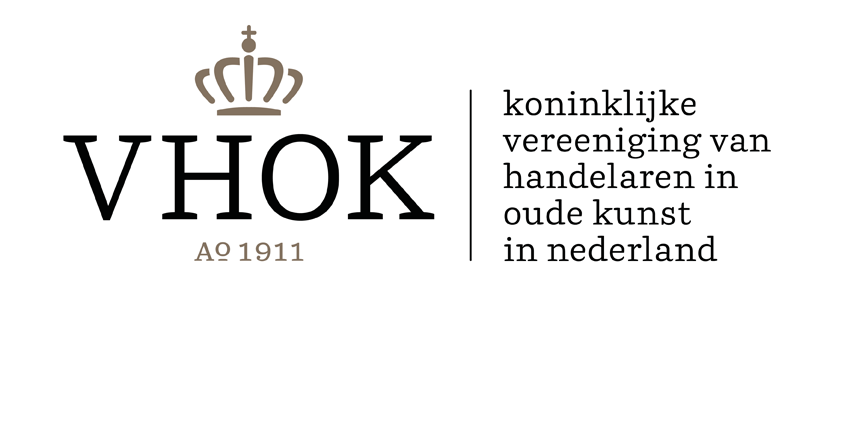This impressive Jugendstil vase was created by the renowned glassworks Johann Loetz Witwe, located in Klostermühle (present-day Czech Republic). Around 1900, Loetz gained international acclaim for its innovative and artistically sophisticated iridescent glass objects, many of which were presented at world exhibitions such as the Exposition Universelle in Paris in 1900. The company was led by Max Ritter von Spaun, with Eduard Prochaska as technical director, and became known for its groundbreaking techniques, forms, and decorative designs.
Phänomen Genre 1/18
The vase shown here is executed in Phänomen Genre 1/18, a decor introduced in 1901. This particular genre is easily recognizable by its distinct base color “Zephir”—a transparent, light green to greyish-turquoise tone that gives the piece a modern appearance. Over this base, deep blue vertically applied “tadpoles” are meticulously placed—stylized droplet-shaped elements with silvery iridescent stripes that reflect light in a captivating manner. This interplay of color and texture gives the vase a dynamic and strikingly contemporary character, remarkably ahead of its time.
The form of the vase resembles a gourd or bottle shape, with the body transitioning smoothly into a slender neck and slightly flared mouth. The rim is clearly flame-finished, where the tips of the tadpoles are subtly fused into the edge—an expression of the high level of craftsmanship involved in the making of this piece. With its height of 25 cm, the vase provides an ideal canvas for the Phänomen Genre 1/18 décor; the elongated shape elegantly accentuates the vertical alignment of the tadpoles.
Signature
The underside of the vase features a perfectly polished pontil, a detail that is characteristic of high-quality Loetz productions from this period. Although this particular example is unsigned, the combination of décor, form, and execution unmistakably confirms its authenticity as a true Loetz creation.
Price: €6100,-
Interested in this item? – Please click here to send us a message using the contact form.
